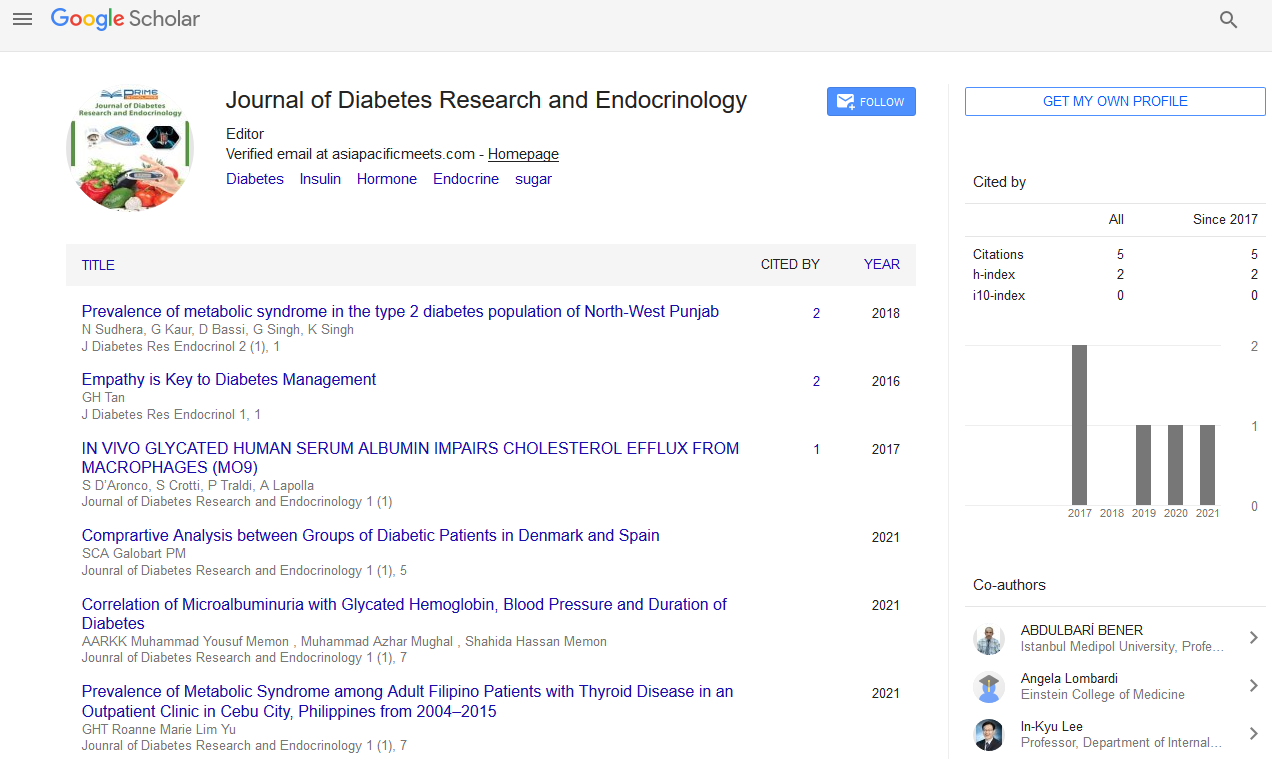Commentary - (2023) Volume 7, Issue 2
Energy for All Living Things in the World is a Monosaccharide Pivotal Sugar
George Nychas*
Department of Horticultural Science, Tarbiat Modares University, Iran
*Correspondence:
George Nychas,
Department of Horticultural Science, Tarbiat Modares University,
Iran,
Email:
Received: 31-May-2023, Manuscript No. IPJDRE-23-16867;
Editor assigned: 02-Jun-2023, Pre QC No. IPJDRE-23-16867;
Reviewed: 16-Jun-2023, QC No. IPJDRE-23-16867;
Revised: 21-Jun-2023, Manuscript No. IPJDRE-23-16867;
Published:
28-Jun-2023, DOI: 10.36648/ipjdre.7.2.18
Description
Glycolysis, gluconeogenesis, glycogenolysis, and glycogenesis
are all components of glucose assimilation. Numerous catalysts
in the liver’s glycolysis cycle enable cells to break down glucose.
Through the creation of synapses and the formation of ATP,
which serves as the foundation for the maintenance of both
neuronal and non-neuronal cell structures, glucose digestion
provides the fuel necessary for physiological brain function.
Diabetes is a metabolic issue, and that recommends it plainly
cripples the body’s capacity to transport and store energy from
food. This happens because there are problems making insulin.
At the point when starches are consumed, the body starts to
separate them into their most straightforward structure, glucose.
The best strategy for considering glucose ingestion is as
an energy source. It creates the energy that keeps cells alive,
especially red platelets and synapses that main use glucose for
energy. Glucose-6 phosphate is made when glucose from the
course framework enters the cell. The vast array of responses
that take place within each cell of the body and provide the
body with energy is referred to as digest. Basic cycles and the
mixture of new normal material make use of this energy. The
going with condition gives a portrayal of the breakdown of glucose
that carrying on with living things use to make energy. The
energy hotspot for the cell’s work and compound responses is
ATP, which is produced using the glucose that has been consumed.
These issues combine both hyperglycemia and hypoglycemia,
paying little cerebrum to past finding of diabetes in
a specific patient. A substance that is committed to regulating
glucose levels is called glucagon. It is conveyed into the circulatory
framework from the pancreas, where it is made by the alpha
cells in the Langerhans islets. The two types of absorption
are as follows: Anabolism as well as catabolism Anabolism uses
energy to build cell parts like proteins and nucleic acids, however
catabolism is the breakdown of normal matter. Glucose
has a place in the sugar family. It is the main wellspring of energy
for all living things in the world and is a monosaccharide fundamental
sugar. It is found in high aggregates in regular thing
including berries, vegetables and honey. Carbohydrates include
sugars, starch, and glycogen all in one category. They are a huge
wellspring of energy for the telephones. Another polysaccharide
made from glucose is cellulose. Similarly, cellulose is made
up of unbranched glucose ties. Glucose is the critical wellspring
of fuel for our phones. The liver and muscles are where the
body stores glucose until it is not generally needed for energy
creation. This put away kind of glucose is contained many related
glucose particles and is called glycogen. The primary step
in the breakdown of glucose into energy for cell absorption is
glycolysis. In glycolysis, a stage that needs energy is followed
by a stage that provides energy. Most sorts of diabetes have no
known reason. Sugar structures in the circulatory framework in
all occurrences. This is because there isn’t enough insulin made
by the pancreas. Both sort 1 and type 2 diabetes might be welcomed
on by a blend of natural and hereditary elements.
Acknowledgement
None.
Conflict Of Interest
The authors declare that they have no conflict of interest.
Citation: Nychas G (2023) Energy for All Living Things in the World is a Monosaccharide Pivotal Sugar. J Diab Res Endocrinol. 7:18.
Copyright: ©2023 Nychas G. This is an open-access article distributed under the terms of the Creative Commons Attribution License, which permits unrestricted use, distribution, and reproduction in any medium, provided the original author and source are credited.

